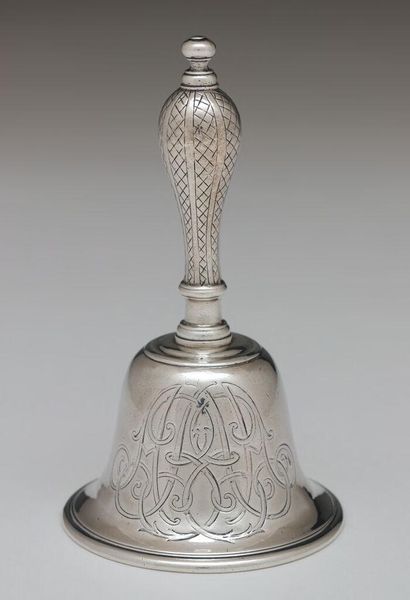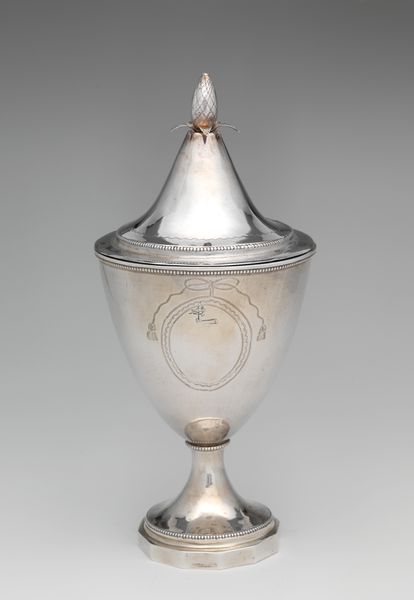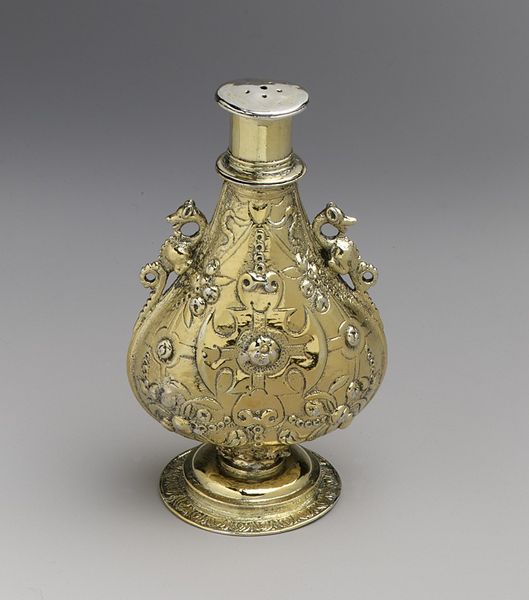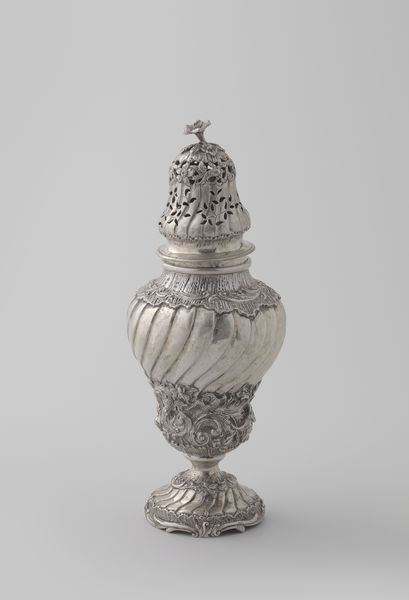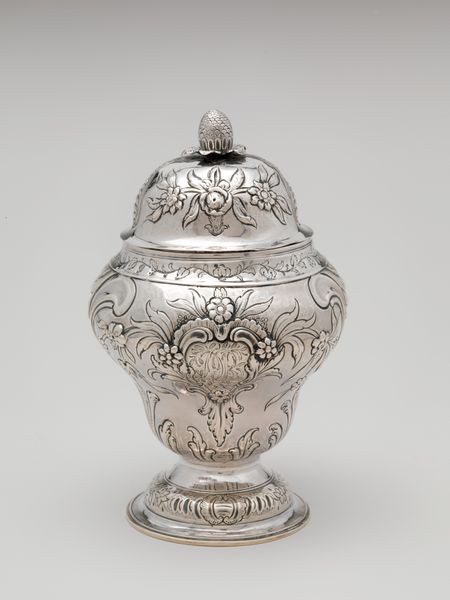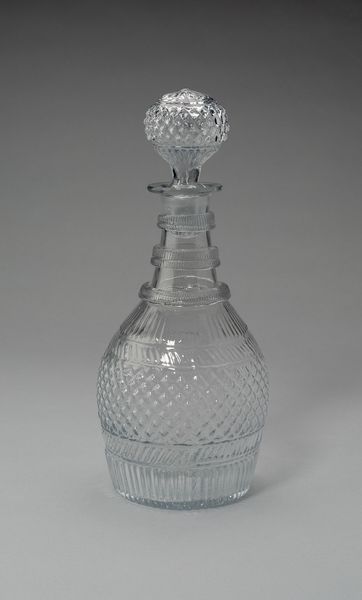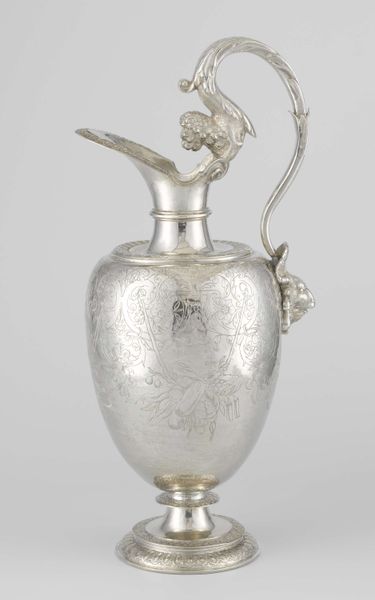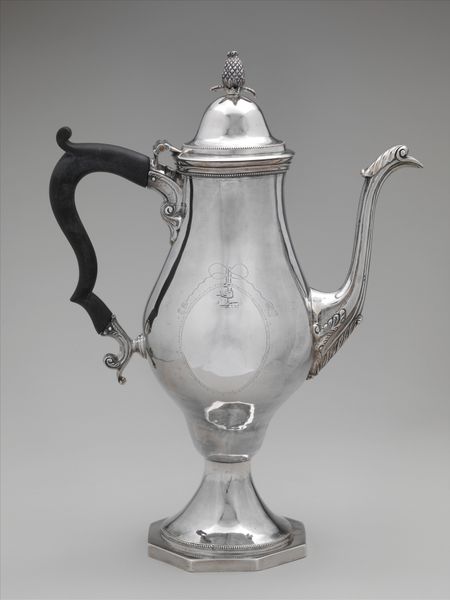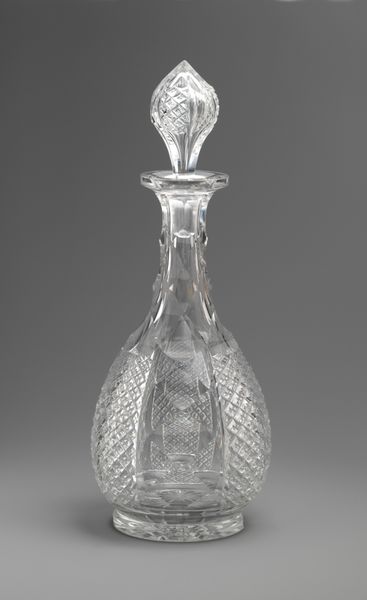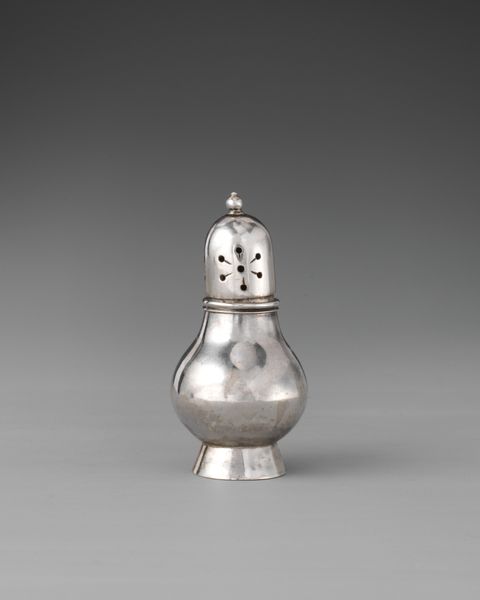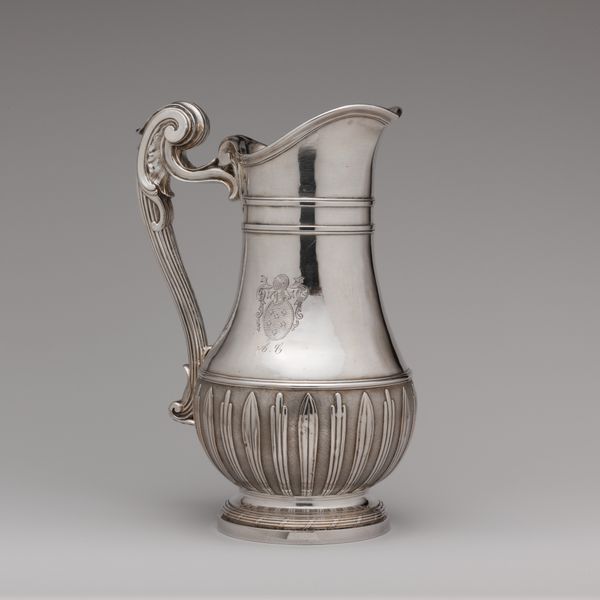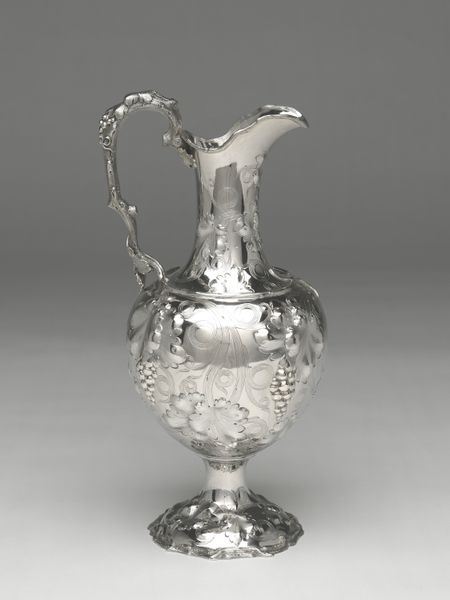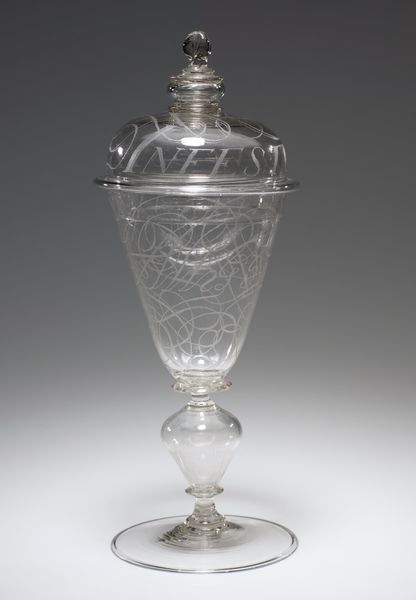
silver, metal, sculpture
#
art-nouveau
#
silver
#
metal
#
form
#
sculpture
#
decorative-art
Dimensions: height 20.6 cm, diameter 12.0 cm, weight 522 gr
Copyright: Rijks Museum: Open Domain
Curator: Welcome. We're standing before "Vaas," a silver sculpture created around 1900 by Frans (I) Zwollo and currently held here at the Rijksmuseum. Editor: The hammered texture of the silver immediately grabs me; it’s surprisingly tactile. The form itself is so sensuous – full and round at the base, then rising into that slender neck. Curator: Absolutely. Zwollo was a master of his medium. The techniques he employed—hammering, chasing, and engraving—all contribute to its unique texture and the play of light across the surface. There's a strong emphasis here on the artistic labor. This wasn't merely cast; it was painstakingly shaped by hand. Editor: And those repeated, stylized flower motifs! With a turquoise stone at the center of each – they're reminiscent of sun symbols. Do you think they represent cycles of rebirth or perhaps just the beauty of the natural world in the Art Nouveau style? Curator: Undoubtedly, both elements are at play. The Art Nouveau movement was deeply invested in organic forms and symbolism and the meticulous rendering, and application of silver and semi-precious stones were time-intensive, and bespoke, meant to signal wealth, but perhaps also evoke ideals about the natural world being reflected in our art, crafts, and design. Editor: It makes you wonder about the context, though. Who would have commissioned this, and for what purpose? Did it hold ceremonial significance, or was it purely decorative? Curator: It's plausible it was part of a wealthy household. This level of craftsmanship suggests a high status; decorative arts of this period frequently were a celebration of status and aesthetic ideals. We should consider the socio-economic context that supported the production of such objects and where they'd fit within these highly cultivated interiors. Editor: Well, I can't help but feel transported when I see it. The vase holds a mystical aura for me. A vessel of symbolic blooms frozen in silver; so interesting to learn more about what went into its production. Curator: Precisely. The history and hand of the maker speak so loudly through such decorative art objects.
Comments
No comments
Be the first to comment and join the conversation on the ultimate creative platform.
